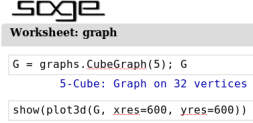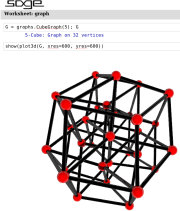Sage: A Free, Open-source Complex Math Tool
University of Washington - A former assistant professor from Harvard, now at UofW, Dr. William Stein, and several students, have created a new open-source complex math solving tool called Sage. It is an Internet-based graphical tool which allows the user to do basically anything mathematically, from "mapping a 12-dimensional object to calculating rainfall patterns under global warming."
Frustrated
Stein began working on the project after spending the better part of a decade frustrated by commercial software. While the software worked he found a couple limiting factors. First and foremost, they are closed source entities. Any mathematician using commercial software would have no way of finding out how the machine arrived at the particular result. And second, there are large licensing fees for the major commercial programs, like Matlab, Maple, Mathematica and Magma.
Development time
Stein spent the better part of a year and a half developing the prototype. After that, some students jumped on board and began helping him. Initially he assembled the bulk of Sage with free, open-source algorithms which were well-known and documented, while he filled in the gaps with the parts that were missing. Presently, the entire project is open-source and anyone can obtain a copy, compile it and run it on any machine they like.
Inputting a command like this:
Yields a results page like this:
Sage Days
Stein has put together regular meetings in support of the ongoing development of Sage, called "Sage Days". He says, "I think we can be better than the commercial versions. I really want it to be the best mathematical software in the world."
Sage can be downloaded for a test drive here.
Get Tom's Hardware's best news and in-depth reviews, straight to your inbox.
Author's opinion
I remember using Mathematica and Maple when I was in college. They were wonderful! But, I never thought for one instant ever that I would be using a computer tool to provide any type of actual proof. Everything I did on the computer, even back then in the early 1990s, was done entirely for one purpose: quick and dirty testing. As a Physics/Math major, I still had to go through the rigors of doing everything long-hand. It is for this reason I don't really see much validity in Stein's first point. However, I definitely see the added value in being able to look at the software to see exactly how the numbers were arrived at.
I definitely see his point regarding cost. Pirated copies of Maple were running rampant in the universities. Had they been significantly less expensive, I think many more people would've bought them, and I think ultimately the companies would've made more money. It's not always about charging what the market will bear. It's often about charging what the mass market is willing to pay you so that you receive the maximum return. Don't believe me? Just ask a company called Javelin regarding their spreadsheet software that greatly exceeded Lotus 1-2-3's abilities, long before Lotus came around. It was the expense that keeps us all from using ".jav" spreadsheet file extensions today.

